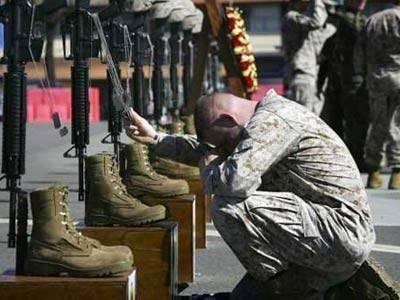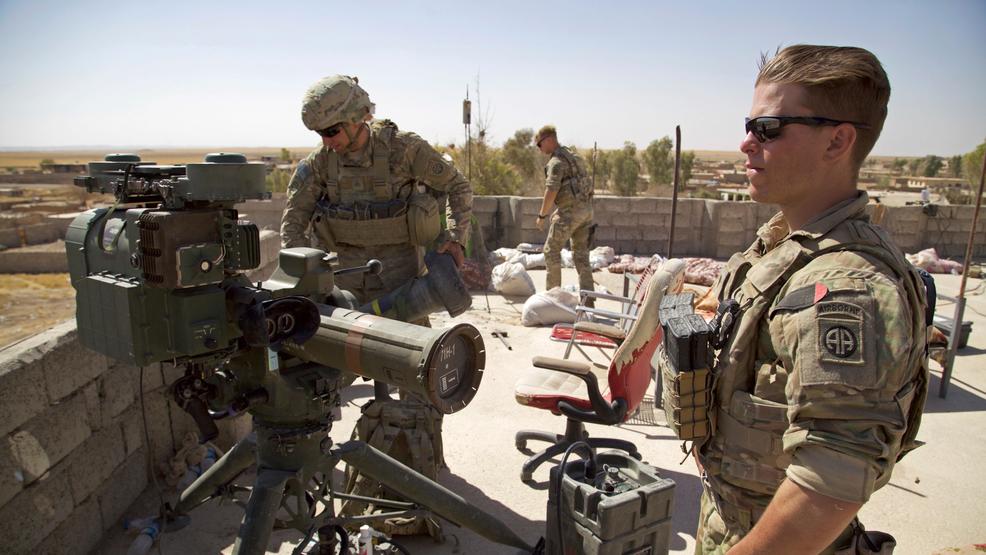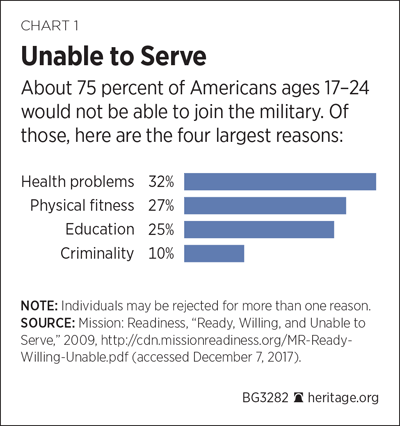- Joined
- Nov 29, 2016
- Messages
- 5,674
- Points
- 63
Short of EVERYTHING from men women Bapoks, weapons, equipments, parts, ships, planes, funds, technologies, morals, spirits, ideas, Courage, Guts, Loyalty, Discipline.... all falling behind and falling apart. MAGA Dotard killed USA!
https://breakingdefense.com/2018/02/manpower-parts-shortages-would-hinder-navy-in-wartime/
Manpower, Parts Shortages Would Hinder Navy In Wartime
Faced with erratic funding from Congress, the Navy has pursued cost-efficiency so rigorously that it has cut corners and compromised peacetime safety and, very possibly, wartime performance. Crews are shorthanded and spare parts stockpiles are low.
By Sydney J. Freedberg Jr. on February 14, 2018 at 3:21 PM
68 Comments

The Ticonderoga-class cruiser Shiloh in dry dock in Yokosuka, Japan.
CLARIFIED to distinguish our analysis from experts’ remarks WASHINGTON: Faced with erratic funding from Congress, the Navy has pursued cost-efficiency so rigorously that it has cut corners and compromised peacetime safety and, very possibly, wartime performance. That’s the unhappy implication I walked away with after a panel of current and former naval officers at the Center for Strategic & International Studies this morning.

Vice Adm. Richard Brown
Manning, maintenance, and training have all suffered in in the pursuit of savings, agreed the officers — the new head of Naval Surface Forces, two retired admirals, and a former commander. While the officers didn’t say so explicitly, the audience was well aware that those problems manifested in last summer’s accidents that killed 17 sailors on ships whose crews made errors in basic seamanship. (In contrast to Navy Secretary Richard Spencer’s pledge that “we’ll start every conversation with 17 dead sailors,” I’ve noticed a number of Navy admirals — and their public affairs officers — takes pains not to link the fatalities directly to discussions of readiness). But 17 dead might just be the start: If war broke out and a ship got hit, it might not have enough people or spare parts to fix itself and get back in the fight, causing even more casualties.
“We’ve become so efficient we’ve lost flexibility,” said Vice Adm. Richard Brown, the new commander of Naval Surface Forces (replacing the hastily-departed Vice Adm. Tom Rowden). “There’s a trade-off between efficiency and effectiveness… but we had to become efficient in the face of nine years of Continuing Resolutions and downward trends in the budgets.”
With budgets now rising, however, the Navy plans to put more sailors on ships, increase the proportion of experienced officers, and stock more spare parts on ships at sea instead of relying on “just in time” delivery from land, Brown said, which is problematic in peacetime and potentially impossible in war.

The Congress Problem
All these, of course, cost money. The Navy’s budget request for 2019 would increase Operations & Maintenance funding by 2.7 percent over the ’18 request. What’s more, last week’s budget deal gives all the services significantly more funding for 2018 than they asked for. But that budget deal came four months into the fiscal year and Congress probably won’t pass the final spending bills until March 23rd. Until then the government functions under the strict spending constraints of a Continuing Resolution, which prevent (for example) much-needed maintenance.
“We’re in a CR until at least the 23rd of March when the appropriators appropriate,” Brown said.
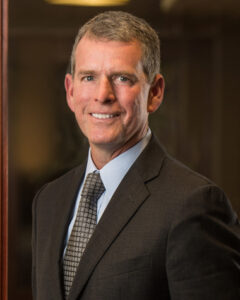
Bryan Clark
The issue isn’t how much money the Navy gets, “the problem is when the money comes,” said CSBA scholar and retired Navy commander Bryan Clark, speaking alongside Vice Adm. Brown at CSIS. The Navy is actually getting 100 percent of the readiness money it requests, but it’s arriving so late and so unpredictably that the fleet can’t make proper use of it, Clark said. The service has to postpone planned projects, then rush to catch up, which makes everything cost more and the money run out before all the needed work is done.
“A lot of the problems that we’re talking about are not the result of mismanagement by the United States Navy,” said retired Vice Adm. Phillip Balisle. His landmark report in 2010 foreshadowed many of the current problems, but he hasn’t spoken about it publicly until today. ” Congress has a job too… to fund and maintain the Navy.” If Congress doesn’t do its part, Balisle said to applause, “we can never get ahead of this problem, no matter what the United States Navy does.”

The supply ship USNS Medgar Evers (T-AKE 13, right)) replenishes the amphibious ship USS Kearsage (LHD 3, left).
Spare Parts
What has the Navy done to itself in its pursuit of efficiency, and how can it get back its margins? The officers at CSIS gave several examples.
“We just did a logistics study,” said retired Cdr. Clark, now with the Center for Strategic & Budgetary Assessments. There are just enough T-AO oilers to keep the fleet fueled on a predictable schedule using centralized hubs, for example, but that system has no margin of error for wartime.

Vice Adm. (ret) Peter Daly
Meanwhile, Clark said, the Navy’s T-AKE supply ships are “mostly empty. Why? Planners decided it was more efficient to orders parts as needed, rather than stockpile them; to send them via civilian carriers, like DHL or Fedex, rather than haul them in Navy hulls; and to install them at centralized repair facilities, rather than do repairs at sea. This system is tricky enough in peacetime but potentially disastrous in war, when supply lines may be cut, central depots destroyed, and Fedex won’t be flying into harm’s way. Ships need the spare parts and skilled personnel aboard to repair themselves, Clark said.
This problem’s not new, said retired Vice Adm. Peter Daly, CEO of the US Naval Institute and orchestrator of today’s panel. When Daly commanded a destroyer, he said with a touch of snark, “we had four store rooms and they were beautiful — we had the Stanley Vidmar cabinets, we could go in there and pet them — but only two of those store rooms had parts, because some OA (operational analysis) grad in the supply corps said ‘we can do just in time.’ Just in time is great if the store is open and they’ve got your parts rights when you need them….That doesn’t always happen.”
The Navy’s working on it, said Vice Adm. Brown. “Is the part that the sailor needs in the store room? (That) is a priority for us right now and we’re identifying those parts, actually working with the Digital Warfare Office right now to do a lot of analysis,” he said. Ships don’t have space to carry everything, so some parts that fail only rarely will still have to come from land. But other parts fail often enough, and are important enough — such as components of the SPY radar on Aegis ships — that they can and should be carried aboard.
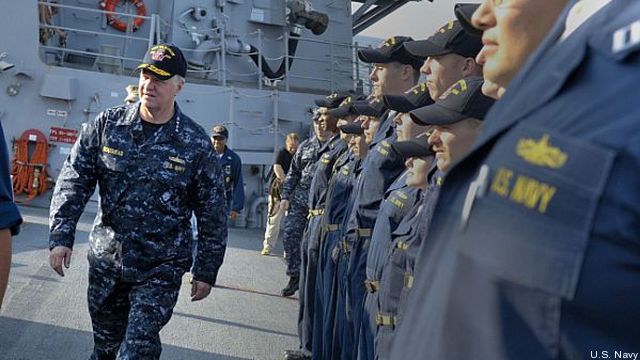
Sailors aboard the destroyer USS Sampson
Skilled People
Having the parts, however, means nothing if you don’t have enough skilled people to install them. Navy ships have been chronically undermanned for years. As sailors tried to get everything done, workloads for some exceeded 100 hours a week, causing chronic fatigue that probably contributed to last year’s string of accidents.
Wartime would be worse, said Daly. “One man’s excess capacity is another man’s combat surge,” he said. Ships need “not just the manpower you that you need to do the peacetime steaming, but the people that are going to save that ship in the damage control scenario.”
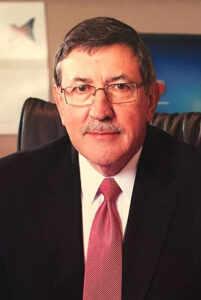
Retired Vice Adm. Phillip Balisle
For years the Navy saved money by deliberately shorting its personnel accounts — there are about 7,000 missing sailors across the surface, submarine, and air fleets, Brown said — but the service is reversing that. Surface ship manning will soon drop to 92 percent of the officially required crew, Brown admitted, but by late 2019 it will be back at 95 percent and on track to reach 98 percent.
It takes time for these improvements to take effect, however. One of the efficiencies criticized by the Balisle Report in 2010 was that the Navy had closed its Surface Warfare Officer School (SWOS), replacing classroom education with canned courses on computers. The Navy reversed course in 2012 and created a new schooling and officer selection system that’s actually lengthier and more rigorous than the old one, Brown said, but its graduates are still working their way up through the ranks, and none is yet commanding a ship. At a lower level, however, the Navy will be able to double the number of experienced officers doing their second tour as a department head (departments being such things as weapons, engineering, or supplies).
Brown also said Navy is studying how to recreate its Readiness Squadrons: “It is absolutely on the table and it’s one of my priorities,” he said. These organizations, dedicated to ensuring proper manning, training, and maintenance, were disbanded in past efficiency drives. Several organizations in the fleet today are de facto readiness squadrons in function, Brown argued, including the new Naval Surface Group Western Pacific stood up after the collisions (which the Navy Secretary’s review board criticized) but the service needs to organize them more systematically.
Restoring the Readiness Squadrons was “the single most significant” recommendation he made back in 2010, Vice Adm. Balisle said, and “I believe it’s just as applicable today.”
https://www.businessinsider.sg/air-...pilot-and-manpower-shortage-2017-8/?r=US&IR=T
A ‘quiet crisis’ in the Air Force is sapping the service of manpower
Christopher Woody, Business Insider US
August 15, 2017
AddThis Sharing Buttons
Share to FacebookFacebookShare to TwitterTwitterShare to LinkedInLinkedInShare to EmailEmailShare to PrintPrint

Tech. Sgt. Javier Cruz/USAF
The Air Force is struggling with a seemingly intractable personnel crisis, evaluating new policies to bring more airmen and women into the service as well as to keep them in uniform.
Air Force Chief of Staff Gen. David Goldfein and Deborah Lee James, then the secretary of the Air Force, called the shortfall a “quiet crisis” in a July 2016 article, estimating that the shortage of fighter pilots was expected to grow from 500 to 700 by the end of that fiscal year in September.
Though the service expanded its total force during the 2016 fiscal year, as of April 2017 it was still 1,555 pilots short of the mandated 20,300.
Of those absent, it was estimated 950 were fighter pilots, and that shortfall is expected to grow to 1,000, or one-third of the force, by the end of the 2017 fiscal year.
Goldfein and James named recruiting by commercial airlines – which lose senior pilots to mandatory retirement ages – as a main factor pulling pilots away. To address such financial enticements, the Air Force has upped retention bonuses from $25,000 to $35,000, and pilots who stay in for the maximum 13 years can make nearly a half-million dollars.
But money doesn’t appear to be the only issue.

Capt. Jonathan Bonilla and 1st Lt. Vicente Vasquez, 459th Airlift Squadron UH-1N Huey pilots, fly over Tokyo after completing night training, April 25, 2016.
US Air Force/Yasuo Osakabe
Air Force personnel have been especially burdened by ongoing military operations over the last 20 years. Poor work-life balance, limited flight time, and a growing number of duties unrelated to flying have also contributed to dissatisfaction with life in the Air Force for its members. A 2015 exit survey found that 37% of personnel considered “additional duties” to be part of the reason they left the force.
Air Force leadership has contemplated stop-loss policies to keep pilots in the service, but officials have also pushed for change.
A Defense Department memo issued last year ordered the reduction of some duties, like first-aid courses and website management, by October 1, 2016, the end of that fiscal year. The Air Force has also decided to waive some training requirements for airmen and add more flexibility to assigning duties.
But the reductions ordered by the memo were complicated by the transition to a new White House, according to David Max Korzen, a former Air Force pilot and current Air Force Reserve member. Moreover, Air Force leadership has said action to reduce or eliminate such duties should be lead by commanders at lower levels.
“We’re giving commanders the authority to take risk and to take action as they see fit,” Brooke Brzozowske, an Air Force public-affairs officer, told Korzen. “It’s not a one-size fits all, let’s get rid of everything [plan]. Sometimes it is going to be consolidating; sometimes it is going to be putting it in different areas. Different squadrons need different things.”

Special Tactics Airmen from the 24th Special Operations Wing jump out of an MC-130H Talon II at Hurlburt Field, Florida, January 7, 2015.
USAF/Senior Airman Christopher Callaway
But the uneven transition – handicapped by differing regulatory requirements, limited resources, and a lack of top-down guidance – has created a uneven landscape of standards across the force that, according to Korzen, has further eroded morale.
“Air Force leaders seem to be committed to making changes. But a continued lack of guidance, authority, and resourcing from the Pentagon will only exacerbate the manpower crisis,” Korzen writes. “Airmen feel they have been disappointed by promises of change in the past and they are not confident the Air Force will succeed now.”

Air Force Tech. Sgt. James L. Harper Jr., aerial-combat photographer, takes a self portrait on a training mission, August 19, 2009.
US Air Force/Technical Sgt. James L. Harper Jr.
Members of other service branches have cautioned about the “deluge of requirements” burdening unit commanders and their troops.
And the Pentagon appears to be pursuing a broader review of non-combat duties.
In a Defense Department memo obtained by Military Times in July, Defense Secretary James Mattis ordered the undersecretary of defense for personnel and readiness to determine changes to personnel policies needed to allow “increased flexibility to organize, train, and equip more ready and lethal forces.”
The memo named several specific duties to be reviewed, including those covering “professional military education to regain a concentration on the art and science of war fighting” and “requirements for mandatory force training that does not directly support core tasks.”
https://www.businessinsider.sg/air-...-back-to-fix-pilot-shortage-2018-5/?r=US&IR=T
The Air Force wants up to 1,000 retired pilots and airmen to come back to fix its manpower crisis
Christopher Woody, Business Insider US
May 24, 2018
AddThis Sharing Buttons
Share to FacebookFacebookShare to TwitterTwitterShare to LinkedInLinkedInShare to EmailEmailShare to PrintPrint

Air Force fighter pilots walk to the flight line at Eglin Air Force Base, Florida, September 26, 2014.
US Air Force photo
The Air Force said in a release on Wednesday that retired officers with pilot, combat systems, and air-battle-manager specialty codes “are encouraged to apply for the Voluntary Retired Return to Active Duty Program to help alleviate manning shortages within the Air Force rated community.”
The VRRAD extension was approved by Air Force Secretary Heather Wilson on May 11 “as one of a wide range of initiatives the Air Force is pursuing to improve rated officers’ quality of life and quality of service in order to increase retention and the rated officer inventory.”

An Air Force F-35 student pilot climbs into an F-35 Lighting II at Luke Air Force Base, Arizona, July 7, 2017.
(US Air Force photo/Staff Sgt. Jensen Stidham)
The Air Force said at the end of 2017 that its total shortage was “around 2,000” pilots,or about 10% of the total force. The Government Accountability Office said in April that the shortfall is concentrated among fighter pilots with less than eight years of experience – reflecting the bottleneck in the training pipeline that has exacerbated the shortage.
The service also said the active-duty tour length for returnees would be extended to a minimum of 24 months and a maximum of 48 months. Officers currently on 12-month active-duty tours as part of the VRRAD program can apply for extensions.
“Officers who return to active duty under VRRAD will fill rated staff and active flying staff, test, training, and operational positions where rated officer expertise is required,” Maj. Elizabeth Jarding, the Air Force’s Personnel Center VRRAD rated liaison, said in the release. “We can match VRRAD participants to stateside or overseas requirements where they’ll fill critical billets that would otherwise remain vacant due to the shortage of rated officers.”
Returning pilots could also volunteer to deploy and potentially fly combat missions.
Returnees serving as instructors could address the pilot shortage by allowing undergraduate training courses to produce more pilots and by training advanced pilots on new systems. The latter is critical for pilots to stay qualified and advance, and their inability to do so is one factor that led many to leave the force in recent years.

A US Air Force aerial combat photographer takes a self-portrait during a training mission over the Atlantic Ocean, August 19, 2009.
US Air Force/Technical Sgt. James L. Harper Jr.
The VRRAD initiative was announced in August 2017, at which time the service said it was looking for up to 25 retired pilots from any pilot specialty code to return to fill “critical-rated staff positions,” allowing active-duty pilots to remain with units to fill mission requirements. Returnees were limited to non-flying positions.
The changes announced on Wednesday – extending term length and expanding the specialty codes that are eligible – were prompted in part by the pilots returning, who “expressed interest in the stability afforded by a longer tour,” Air Force Personnel Center spokesman Mike Dickerson told Military.com.
“In addition, longer tours also afforded the potential to utilize these officers in flying as well as non-flying positions, providing more time to requalify and be effectively utilized in various airframes,” Dickerson said, adding that the 2017 VRRAD program has thus far approved 10 officers, five of whom have returned to active duty.

President Donald Trump with Air Force Chief of Staff Gen. David L. Goldfein, second left, and two Air Force pilots at Joint Base Andrews, Maryland, September 15, 2017.
(US Air Force photo by Scott M. Ash)
In late October, President Donald Trump amended an executive order to allow the Defense Department to recall up to 1,000 retired pilots to address the Air Force’s shortage of fliers.
An Air Force spokeswoman said shortly afterward that the service did not plan to force pilots to return to address the shortage. (The Air Force also expanded the number of pilots it was willing to draw from the Air National Guard and Reserve.)
According to the release, rated officers under the age of 50 with the rank of captain, major, or lieutenant colonel who retired from active duty in the past five years or will retire within 12 months of the VRRAD application date are eligible to apply.
Candidates must also be medically qualified and have held a rated staff position within 15 years, or have been qualified in an Air Force aircraft within 10 years, of their application for a flying position.
The Air Force Personnel Center will take VRRAD applications until December 31 or until all openings are filled.
http://www.oann.com/audit-60-percent-of-u-s-military-train-and-equip-projects-failed/
Audit: 60 Percent of U.S. Military ‘Train and Equip’ Projects Failed
OAN Newsroom
UPDATED 2:10 AM PT – Sat. June 2, 2018
A congressional watchdog said the Pentagon’s multi-project initiative to train and equip local fighters to combat terrorism around the world is failing.

Secretary of the Army Dr. Mark T. Esper talks with Soldiers at the National Training Center, Fort Irwin, California, Dec. 1, 2017. (Photo Credit: U.S. Army photo by John Martinez)
According to a report Wednesday from the government accountability office, the Global Train and Equip program was not successful in enhancing the capabilities of individual forces in 13 of 21 projects.
While the assessment describes some positive outcomes, the military spent some $2 billion on the program in 2016 and 2017.
According to the watchdog, misuse of equipment, manpower shortages, and flawed project proposal designs all contributed to a low success rate of operations.
http://nationalinterest.org/commentary/the-us-militarys-ethics-crisis-9872
The U.S. Military's Ethics Crisis
Higher standards and higher scrutiny.
James Joyner
TweetShareShare

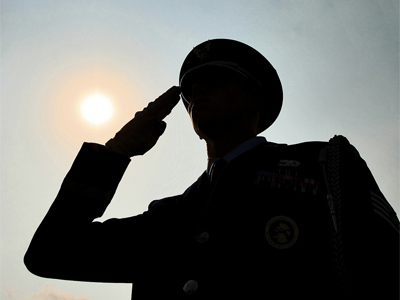 Military officers behaving badly have been making headlines. But, rather than a sign of widespread corruption, the fact that they're being caught and disciplined is an indication of how seriously the profession takes its ethical responsibilities.
Military officers behaving badly have been making headlines. But, rather than a sign of widespread corruption, the fact that they're being caught and disciplined is an indication of how seriously the profession takes its ethical responsibilities.
From massive cheating scandals with Air Force and Navy nuclear officers and Army National Guard recruiters to generals and admirals abusing the perks of their office or sending wildly inappropriate emails detailing the things they'd like to do with female Members of Congress, the string of reports have many seeing an ethical crisis in the American armed forces.
They prompted TNI contributing editor Paul Pillar to ask, "What's going on with military officers?" The Pentagon's senior leadership is apparently asking themselves the same thing. Earlier this month, the DoD's press secretary put out word that Defense Secretary Chuck Hagel is "concerned about the health of the force and the health of the strong culture of accountability and responsibility that Americans have come to expect from their military" and "generally concerned that there could be at least at some level a breakdown in ethical behavior and in the demonstration of moral courage." Friday, the other shoe dropped, with Hagel himself announcing that he would appoint a senior general as an ethics czar and that "It will be an individual who is experienced in not just this building, but I want someone who understands the outside, who understands the pressures of combat, the pressures of curriculums and testing, and who has a good, well-rounded background in command."
General Martin Dempsey, chairman of the Joint Chiefs of Staff, agrees, proclaiming that, "It is not the war that has caused this. It is the pace, and our failure to understand that at that pace, we were neglecting the tools that manage us as a profession over time." This was Pillar's instinct as well. He observed that "The U.S. armed forces are coming off more than a decade of continuous involvement in overseas warfare, with the particular wars in question not having gone especially well" and noted "One thinks, by way of comparison, of the years immediately after the Vietnam War, another overseas war that did not go well and a time when aberrant conduct in the military such as drug abuse was high."
Regardless, Dempsey says, "This challenge didn't accumulate overnight, and it won't be solved overnight." Further, Dempsey added, "Acts of crime, misconduct, ethical breaches, command climate, and stupidity each require a distinct solution. But the overall solution is attention to who we are as a profession." Hagel echoed this, declaring, "Ethics and character are absolute values that we cannot take for granted. They must be constantly reinforced."
While the secretary and chairman are of course right, it's worth noting that America's military officers have for generations been selected for and educated in the ethical standards of their profession. Before even being selected for officer training, candidates must pass extensive background checks and be eligible for a security clearance. Even minor brushes with the law and experimentation with recreational drugs can be disqualifying. Cadets are given extensive training on professional ethics, the law of war and the Uniform Code of Military Justice. This education is continued throughout their careers, with reinforcement and expansion through basic and advanced courses and then taken to broader context at staff and war colleges. Further, throughout their careers, their efficiency reports rate them on integrity, with anything but the highest marks an assurance they won't be promoted.
Few professions have anything like this level of screening and training for character. The only analog that occurs to me, the Roman Catholic priesthood*, is instructive.
Like military officers, Catholic priests are required** to have a bachelor's degree and extensive follow-on education. Typically, priests have a master's degree in divinity, with extensive coursework in ethics and moral philosophy, prior to ordination. The American military, by contrast, maintains extensive professional education for its officers throughout their careers, with most getting master's degrees some time in their second decade of service.
The overwhelming number of officers and priests alike are credits to their chosen calling, performing exemplary public service and upholding the highest moral standards. In both cases, however, some fall short; some, spectacularly so. And, because the standards are so high and the uniforms of their profession make them so identifiable as a group, the public scrutiny that comes from these failures is not only high, but reflects on the whole.
Two observations come from the comparison.
https://breakingdefense.com/2018/02/manpower-parts-shortages-would-hinder-navy-in-wartime/
Manpower, Parts Shortages Would Hinder Navy In Wartime
Faced with erratic funding from Congress, the Navy has pursued cost-efficiency so rigorously that it has cut corners and compromised peacetime safety and, very possibly, wartime performance. Crews are shorthanded and spare parts stockpiles are low.
By Sydney J. Freedberg Jr. on February 14, 2018 at 3:21 PM
68 Comments

The Ticonderoga-class cruiser Shiloh in dry dock in Yokosuka, Japan.
CLARIFIED to distinguish our analysis from experts’ remarks WASHINGTON: Faced with erratic funding from Congress, the Navy has pursued cost-efficiency so rigorously that it has cut corners and compromised peacetime safety and, very possibly, wartime performance. That’s the unhappy implication I walked away with after a panel of current and former naval officers at the Center for Strategic & International Studies this morning.

Vice Adm. Richard Brown
Manning, maintenance, and training have all suffered in in the pursuit of savings, agreed the officers — the new head of Naval Surface Forces, two retired admirals, and a former commander. While the officers didn’t say so explicitly, the audience was well aware that those problems manifested in last summer’s accidents that killed 17 sailors on ships whose crews made errors in basic seamanship. (In contrast to Navy Secretary Richard Spencer’s pledge that “we’ll start every conversation with 17 dead sailors,” I’ve noticed a number of Navy admirals — and their public affairs officers — takes pains not to link the fatalities directly to discussions of readiness). But 17 dead might just be the start: If war broke out and a ship got hit, it might not have enough people or spare parts to fix itself and get back in the fight, causing even more casualties.
“We’ve become so efficient we’ve lost flexibility,” said Vice Adm. Richard Brown, the new commander of Naval Surface Forces (replacing the hastily-departed Vice Adm. Tom Rowden). “There’s a trade-off between efficiency and effectiveness… but we had to become efficient in the face of nine years of Continuing Resolutions and downward trends in the budgets.”
With budgets now rising, however, the Navy plans to put more sailors on ships, increase the proportion of experienced officers, and stock more spare parts on ships at sea instead of relying on “just in time” delivery from land, Brown said, which is problematic in peacetime and potentially impossible in war.

The Congress Problem
All these, of course, cost money. The Navy’s budget request for 2019 would increase Operations & Maintenance funding by 2.7 percent over the ’18 request. What’s more, last week’s budget deal gives all the services significantly more funding for 2018 than they asked for. But that budget deal came four months into the fiscal year and Congress probably won’t pass the final spending bills until March 23rd. Until then the government functions under the strict spending constraints of a Continuing Resolution, which prevent (for example) much-needed maintenance.
“We’re in a CR until at least the 23rd of March when the appropriators appropriate,” Brown said.

Bryan Clark
The issue isn’t how much money the Navy gets, “the problem is when the money comes,” said CSBA scholar and retired Navy commander Bryan Clark, speaking alongside Vice Adm. Brown at CSIS. The Navy is actually getting 100 percent of the readiness money it requests, but it’s arriving so late and so unpredictably that the fleet can’t make proper use of it, Clark said. The service has to postpone planned projects, then rush to catch up, which makes everything cost more and the money run out before all the needed work is done.
“A lot of the problems that we’re talking about are not the result of mismanagement by the United States Navy,” said retired Vice Adm. Phillip Balisle. His landmark report in 2010 foreshadowed many of the current problems, but he hasn’t spoken about it publicly until today. ” Congress has a job too… to fund and maintain the Navy.” If Congress doesn’t do its part, Balisle said to applause, “we can never get ahead of this problem, no matter what the United States Navy does.”

The supply ship USNS Medgar Evers (T-AKE 13, right)) replenishes the amphibious ship USS Kearsage (LHD 3, left).
Spare Parts
What has the Navy done to itself in its pursuit of efficiency, and how can it get back its margins? The officers at CSIS gave several examples.
“We just did a logistics study,” said retired Cdr. Clark, now with the Center for Strategic & Budgetary Assessments. There are just enough T-AO oilers to keep the fleet fueled on a predictable schedule using centralized hubs, for example, but that system has no margin of error for wartime.

Vice Adm. (ret) Peter Daly
Meanwhile, Clark said, the Navy’s T-AKE supply ships are “mostly empty. Why? Planners decided it was more efficient to orders parts as needed, rather than stockpile them; to send them via civilian carriers, like DHL or Fedex, rather than haul them in Navy hulls; and to install them at centralized repair facilities, rather than do repairs at sea. This system is tricky enough in peacetime but potentially disastrous in war, when supply lines may be cut, central depots destroyed, and Fedex won’t be flying into harm’s way. Ships need the spare parts and skilled personnel aboard to repair themselves, Clark said.
This problem’s not new, said retired Vice Adm. Peter Daly, CEO of the US Naval Institute and orchestrator of today’s panel. When Daly commanded a destroyer, he said with a touch of snark, “we had four store rooms and they were beautiful — we had the Stanley Vidmar cabinets, we could go in there and pet them — but only two of those store rooms had parts, because some OA (operational analysis) grad in the supply corps said ‘we can do just in time.’ Just in time is great if the store is open and they’ve got your parts rights when you need them….That doesn’t always happen.”
The Navy’s working on it, said Vice Adm. Brown. “Is the part that the sailor needs in the store room? (That) is a priority for us right now and we’re identifying those parts, actually working with the Digital Warfare Office right now to do a lot of analysis,” he said. Ships don’t have space to carry everything, so some parts that fail only rarely will still have to come from land. But other parts fail often enough, and are important enough — such as components of the SPY radar on Aegis ships — that they can and should be carried aboard.

Sailors aboard the destroyer USS Sampson
Skilled People
Having the parts, however, means nothing if you don’t have enough skilled people to install them. Navy ships have been chronically undermanned for years. As sailors tried to get everything done, workloads for some exceeded 100 hours a week, causing chronic fatigue that probably contributed to last year’s string of accidents.
Wartime would be worse, said Daly. “One man’s excess capacity is another man’s combat surge,” he said. Ships need “not just the manpower you that you need to do the peacetime steaming, but the people that are going to save that ship in the damage control scenario.”

Retired Vice Adm. Phillip Balisle
For years the Navy saved money by deliberately shorting its personnel accounts — there are about 7,000 missing sailors across the surface, submarine, and air fleets, Brown said — but the service is reversing that. Surface ship manning will soon drop to 92 percent of the officially required crew, Brown admitted, but by late 2019 it will be back at 95 percent and on track to reach 98 percent.
It takes time for these improvements to take effect, however. One of the efficiencies criticized by the Balisle Report in 2010 was that the Navy had closed its Surface Warfare Officer School (SWOS), replacing classroom education with canned courses on computers. The Navy reversed course in 2012 and created a new schooling and officer selection system that’s actually lengthier and more rigorous than the old one, Brown said, but its graduates are still working their way up through the ranks, and none is yet commanding a ship. At a lower level, however, the Navy will be able to double the number of experienced officers doing their second tour as a department head (departments being such things as weapons, engineering, or supplies).
Brown also said Navy is studying how to recreate its Readiness Squadrons: “It is absolutely on the table and it’s one of my priorities,” he said. These organizations, dedicated to ensuring proper manning, training, and maintenance, were disbanded in past efficiency drives. Several organizations in the fleet today are de facto readiness squadrons in function, Brown argued, including the new Naval Surface Group Western Pacific stood up after the collisions (which the Navy Secretary’s review board criticized) but the service needs to organize them more systematically.
Restoring the Readiness Squadrons was “the single most significant” recommendation he made back in 2010, Vice Adm. Balisle said, and “I believe it’s just as applicable today.”
https://www.businessinsider.sg/air-...pilot-and-manpower-shortage-2017-8/?r=US&IR=T
A ‘quiet crisis’ in the Air Force is sapping the service of manpower
Christopher Woody, Business Insider US
August 15, 2017
AddThis Sharing Buttons
Share to FacebookFacebookShare to TwitterTwitterShare to LinkedInLinkedInShare to EmailEmailShare to PrintPrint

Tech. Sgt. Javier Cruz/USAF
The Air Force is struggling with a seemingly intractable personnel crisis, evaluating new policies to bring more airmen and women into the service as well as to keep them in uniform.
Air Force Chief of Staff Gen. David Goldfein and Deborah Lee James, then the secretary of the Air Force, called the shortfall a “quiet crisis” in a July 2016 article, estimating that the shortage of fighter pilots was expected to grow from 500 to 700 by the end of that fiscal year in September.
Though the service expanded its total force during the 2016 fiscal year, as of April 2017 it was still 1,555 pilots short of the mandated 20,300.
Of those absent, it was estimated 950 were fighter pilots, and that shortfall is expected to grow to 1,000, or one-third of the force, by the end of the 2017 fiscal year.
Goldfein and James named recruiting by commercial airlines – which lose senior pilots to mandatory retirement ages – as a main factor pulling pilots away. To address such financial enticements, the Air Force has upped retention bonuses from $25,000 to $35,000, and pilots who stay in for the maximum 13 years can make nearly a half-million dollars.
But money doesn’t appear to be the only issue.

Capt. Jonathan Bonilla and 1st Lt. Vicente Vasquez, 459th Airlift Squadron UH-1N Huey pilots, fly over Tokyo after completing night training, April 25, 2016.
US Air Force/Yasuo Osakabe
Air Force personnel have been especially burdened by ongoing military operations over the last 20 years. Poor work-life balance, limited flight time, and a growing number of duties unrelated to flying have also contributed to dissatisfaction with life in the Air Force for its members. A 2015 exit survey found that 37% of personnel considered “additional duties” to be part of the reason they left the force.
Air Force leadership has contemplated stop-loss policies to keep pilots in the service, but officials have also pushed for change.
A Defense Department memo issued last year ordered the reduction of some duties, like first-aid courses and website management, by October 1, 2016, the end of that fiscal year. The Air Force has also decided to waive some training requirements for airmen and add more flexibility to assigning duties.
But the reductions ordered by the memo were complicated by the transition to a new White House, according to David Max Korzen, a former Air Force pilot and current Air Force Reserve member. Moreover, Air Force leadership has said action to reduce or eliminate such duties should be lead by commanders at lower levels.
“We’re giving commanders the authority to take risk and to take action as they see fit,” Brooke Brzozowske, an Air Force public-affairs officer, told Korzen. “It’s not a one-size fits all, let’s get rid of everything [plan]. Sometimes it is going to be consolidating; sometimes it is going to be putting it in different areas. Different squadrons need different things.”

Special Tactics Airmen from the 24th Special Operations Wing jump out of an MC-130H Talon II at Hurlburt Field, Florida, January 7, 2015.
USAF/Senior Airman Christopher Callaway
But the uneven transition – handicapped by differing regulatory requirements, limited resources, and a lack of top-down guidance – has created a uneven landscape of standards across the force that, according to Korzen, has further eroded morale.
“Air Force leaders seem to be committed to making changes. But a continued lack of guidance, authority, and resourcing from the Pentagon will only exacerbate the manpower crisis,” Korzen writes. “Airmen feel they have been disappointed by promises of change in the past and they are not confident the Air Force will succeed now.”

Air Force Tech. Sgt. James L. Harper Jr., aerial-combat photographer, takes a self portrait on a training mission, August 19, 2009.
US Air Force/Technical Sgt. James L. Harper Jr.
Members of other service branches have cautioned about the “deluge of requirements” burdening unit commanders and their troops.
And the Pentagon appears to be pursuing a broader review of non-combat duties.
In a Defense Department memo obtained by Military Times in July, Defense Secretary James Mattis ordered the undersecretary of defense for personnel and readiness to determine changes to personnel policies needed to allow “increased flexibility to organize, train, and equip more ready and lethal forces.”
The memo named several specific duties to be reviewed, including those covering “professional military education to regain a concentration on the art and science of war fighting” and “requirements for mandatory force training that does not directly support core tasks.”
- TAGS
https://www.businessinsider.sg/air-...-back-to-fix-pilot-shortage-2018-5/?r=US&IR=T
The Air Force wants up to 1,000 retired pilots and airmen to come back to fix its manpower crisis
Christopher Woody, Business Insider US
May 24, 2018
AddThis Sharing Buttons
Share to FacebookFacebookShare to TwitterTwitterShare to LinkedInLinkedInShare to EmailEmailShare to PrintPrint

Air Force fighter pilots walk to the flight line at Eglin Air Force Base, Florida, September 26, 2014.
US Air Force photo
- The Air Force continues to grapple with a large and protracted shortage of pilots.
- The service has tried a number of things to fix the problem, including increased pay and better quality of life.
- Now the Air Force is expanding a program that allows retired pilots to return to active duty.
The Air Force said in a release on Wednesday that retired officers with pilot, combat systems, and air-battle-manager specialty codes “are encouraged to apply for the Voluntary Retired Return to Active Duty Program to help alleviate manning shortages within the Air Force rated community.”
The VRRAD extension was approved by Air Force Secretary Heather Wilson on May 11 “as one of a wide range of initiatives the Air Force is pursuing to improve rated officers’ quality of life and quality of service in order to increase retention and the rated officer inventory.”

An Air Force F-35 student pilot climbs into an F-35 Lighting II at Luke Air Force Base, Arizona, July 7, 2017.
(US Air Force photo/Staff Sgt. Jensen Stidham)
The Air Force said at the end of 2017 that its total shortage was “around 2,000” pilots,or about 10% of the total force. The Government Accountability Office said in April that the shortfall is concentrated among fighter pilots with less than eight years of experience – reflecting the bottleneck in the training pipeline that has exacerbated the shortage.
The service also said the active-duty tour length for returnees would be extended to a minimum of 24 months and a maximum of 48 months. Officers currently on 12-month active-duty tours as part of the VRRAD program can apply for extensions.
“Officers who return to active duty under VRRAD will fill rated staff and active flying staff, test, training, and operational positions where rated officer expertise is required,” Maj. Elizabeth Jarding, the Air Force’s Personnel Center VRRAD rated liaison, said in the release. “We can match VRRAD participants to stateside or overseas requirements where they’ll fill critical billets that would otherwise remain vacant due to the shortage of rated officers.”
Returning pilots could also volunteer to deploy and potentially fly combat missions.
Returnees serving as instructors could address the pilot shortage by allowing undergraduate training courses to produce more pilots and by training advanced pilots on new systems. The latter is critical for pilots to stay qualified and advance, and their inability to do so is one factor that led many to leave the force in recent years.

A US Air Force aerial combat photographer takes a self-portrait during a training mission over the Atlantic Ocean, August 19, 2009.
US Air Force/Technical Sgt. James L. Harper Jr.
The VRRAD initiative was announced in August 2017, at which time the service said it was looking for up to 25 retired pilots from any pilot specialty code to return to fill “critical-rated staff positions,” allowing active-duty pilots to remain with units to fill mission requirements. Returnees were limited to non-flying positions.
The changes announced on Wednesday – extending term length and expanding the specialty codes that are eligible – were prompted in part by the pilots returning, who “expressed interest in the stability afforded by a longer tour,” Air Force Personnel Center spokesman Mike Dickerson told Military.com.
“In addition, longer tours also afforded the potential to utilize these officers in flying as well as non-flying positions, providing more time to requalify and be effectively utilized in various airframes,” Dickerson said, adding that the 2017 VRRAD program has thus far approved 10 officers, five of whom have returned to active duty.

President Donald Trump with Air Force Chief of Staff Gen. David L. Goldfein, second left, and two Air Force pilots at Joint Base Andrews, Maryland, September 15, 2017.
(US Air Force photo by Scott M. Ash)
In late October, President Donald Trump amended an executive order to allow the Defense Department to recall up to 1,000 retired pilots to address the Air Force’s shortage of fliers.
An Air Force spokeswoman said shortly afterward that the service did not plan to force pilots to return to address the shortage. (The Air Force also expanded the number of pilots it was willing to draw from the Air National Guard and Reserve.)
According to the release, rated officers under the age of 50 with the rank of captain, major, or lieutenant colonel who retired from active duty in the past five years or will retire within 12 months of the VRRAD application date are eligible to apply.
Candidates must also be medically qualified and have held a rated staff position within 15 years, or have been qualified in an Air Force aircraft within 10 years, of their application for a flying position.
The Air Force Personnel Center will take VRRAD applications until December 31 or until all openings are filled.
- TAGS
http://www.oann.com/audit-60-percent-of-u-s-military-train-and-equip-projects-failed/
Audit: 60 Percent of U.S. Military ‘Train and Equip’ Projects Failed
OAN Newsroom
UPDATED 2:10 AM PT – Sat. June 2, 2018
A congressional watchdog said the Pentagon’s multi-project initiative to train and equip local fighters to combat terrorism around the world is failing.

Secretary of the Army Dr. Mark T. Esper talks with Soldiers at the National Training Center, Fort Irwin, California, Dec. 1, 2017. (Photo Credit: U.S. Army photo by John Martinez)
According to a report Wednesday from the government accountability office, the Global Train and Equip program was not successful in enhancing the capabilities of individual forces in 13 of 21 projects.
While the assessment describes some positive outcomes, the military spent some $2 billion on the program in 2016 and 2017.
According to the watchdog, misuse of equipment, manpower shortages, and flawed project proposal designs all contributed to a low success rate of operations.
http://nationalinterest.org/commentary/the-us-militarys-ethics-crisis-9872
The U.S. Military's Ethics Crisis
Higher standards and higher scrutiny.
James Joyner
TweetShareShare

From massive cheating scandals with Air Force and Navy nuclear officers and Army National Guard recruiters to generals and admirals abusing the perks of their office or sending wildly inappropriate emails detailing the things they'd like to do with female Members of Congress, the string of reports have many seeing an ethical crisis in the American armed forces.
They prompted TNI contributing editor Paul Pillar to ask, "What's going on with military officers?" The Pentagon's senior leadership is apparently asking themselves the same thing. Earlier this month, the DoD's press secretary put out word that Defense Secretary Chuck Hagel is "concerned about the health of the force and the health of the strong culture of accountability and responsibility that Americans have come to expect from their military" and "generally concerned that there could be at least at some level a breakdown in ethical behavior and in the demonstration of moral courage." Friday, the other shoe dropped, with Hagel himself announcing that he would appoint a senior general as an ethics czar and that "It will be an individual who is experienced in not just this building, but I want someone who understands the outside, who understands the pressures of combat, the pressures of curriculums and testing, and who has a good, well-rounded background in command."
General Martin Dempsey, chairman of the Joint Chiefs of Staff, agrees, proclaiming that, "It is not the war that has caused this. It is the pace, and our failure to understand that at that pace, we were neglecting the tools that manage us as a profession over time." This was Pillar's instinct as well. He observed that "The U.S. armed forces are coming off more than a decade of continuous involvement in overseas warfare, with the particular wars in question not having gone especially well" and noted "One thinks, by way of comparison, of the years immediately after the Vietnam War, another overseas war that did not go well and a time when aberrant conduct in the military such as drug abuse was high."
Regardless, Dempsey says, "This challenge didn't accumulate overnight, and it won't be solved overnight." Further, Dempsey added, "Acts of crime, misconduct, ethical breaches, command climate, and stupidity each require a distinct solution. But the overall solution is attention to who we are as a profession." Hagel echoed this, declaring, "Ethics and character are absolute values that we cannot take for granted. They must be constantly reinforced."
While the secretary and chairman are of course right, it's worth noting that America's military officers have for generations been selected for and educated in the ethical standards of their profession. Before even being selected for officer training, candidates must pass extensive background checks and be eligible for a security clearance. Even minor brushes with the law and experimentation with recreational drugs can be disqualifying. Cadets are given extensive training on professional ethics, the law of war and the Uniform Code of Military Justice. This education is continued throughout their careers, with reinforcement and expansion through basic and advanced courses and then taken to broader context at staff and war colleges. Further, throughout their careers, their efficiency reports rate them on integrity, with anything but the highest marks an assurance they won't be promoted.
Few professions have anything like this level of screening and training for character. The only analog that occurs to me, the Roman Catholic priesthood*, is instructive.
Like military officers, Catholic priests are required** to have a bachelor's degree and extensive follow-on education. Typically, priests have a master's degree in divinity, with extensive coursework in ethics and moral philosophy, prior to ordination. The American military, by contrast, maintains extensive professional education for its officers throughout their careers, with most getting master's degrees some time in their second decade of service.
The overwhelming number of officers and priests alike are credits to their chosen calling, performing exemplary public service and upholding the highest moral standards. In both cases, however, some fall short; some, spectacularly so. And, because the standards are so high and the uniforms of their profession make them so identifiable as a group, the public scrutiny that comes from these failures is not only high, but reflects on the whole.
Two observations come from the comparison.

